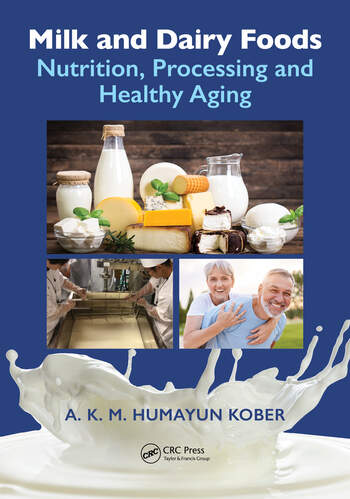Ensuring Consumer Safety: The Imperative of Stricter Packaging And Labeling Controls

Photo courtesy of Getty Images/Monticelllo
The Food Allergen Labeling and Consumer Protection Act (FALCPA) has been in force since 2004, but even 20 years later, people are still dying due to undeclared allergens on food packaging. Just earlier this year, a young woman tragically lost her life after eating Stew Leonards’ cookies that had been mislabeled as not including peanuts, prompting a recall of the product.
The rate of people with food allergies is increasing on a global scale, particularly in the U.S. and other built-up areas. It’s estimated more than 33 million Americans have at least one food allergy, and the prevalence of peanut or tree nut allergies in children has tripled since 1997.
With brands facing mounting pressure to ensure food labeling meets consumer safety standards and avoid product recalls, I explore the existing challenges and what needs improvement across the food packaging industry.
The Concerning State of Food Packaging Legislation
Arguably the biggest problem facing America’s food allergen legislation is the lack of specific thresholds for mandatory labeling and no standardized Precautionary Allergen Labeling (PAL).
Brands legally only need to list all items in the ingredients section or may choose to include them immediately after or next to the ingredients list in a “Contains” section.
Brands are also not obligated to include a “may contain” section to highlight any risk of trace amounts of ingredients, posing significant risks for individuals with severe allergies. This underscores concerns that the FDA may be overly reliant on manufacturers' self-regulation, potentially compromising consumer safety.
Without clear thresholds for mandatory labeling and standardized PAL, individuals are left to decipher varying labeling practices, increasing the risk of accidental exposure to allergens. Even fresh foods, which one might assume would be clearer due to their minimal processing, can present allergen labeling challenges due to cross-contamination risks and a lack of transparency throughout supply chains.
In comparison to the rest of the world, the U.S. has moved far slower in implementing comprehensive allergen labeling regulations and has largely lagged behind other countries in safeguarding consumer health and safety.
It was only last year that sesame was added to the FDA’s “Big 9” allergens list, compared to 2021 in the UK with “Natasha’s Law”. U.S. regulations also state food companies must clearly identify the presence of any of the “Big 9” allergens. However, the EU acknowledges 14 major food allergens, with celery, cereals containing gluten, lupin, mustard, and sulfur dioxide and sulfites all requiring declaration in addition to the standard nine allergens the U.S. recognizes.
In fact, the U.S. has removed some foods from its major allergen list. Coconuts were once included under “tree nuts” as part of the then “Big 8” allergens list, but were removed in 2019 after campaigns from coconut growers, despite one in 260 Americans having a coconut allergy.
Improving Confusing Food Labeling Practices
One of the biggest complaints consumers with allergens have against food labeling is the confusing state in which it is presented.
As mentioned earlier, there is a distinct lack of standardization when it comes to allergen labeling which makes it all the more confusing for both brands and consumers. Just like including “may contain” sections on packaging is voluntary, brands are also not required to use bold fonts to make allergens more prominent and easier to read for consumers, unlike other countries such as the UK.
Additionally, incorporating universally recognized symbols or icons for common allergens could further streamline the process, making labels more intuitive and user-friendly for all consumers.
Equally, food companies mustn’t over-complicate labeling practices. Under-labeling products is naturally the biggest concern, since failure to adhere to FDA guidelines can lead to severe repercussions for brands. However, over-labeling can make it just as difficult for consumers to discern genuine allergen risks, potentially leading to unnecessary food avoidance or mistrust in labeling accuracy.
Standardizing simple labeling practices on packaging would help consumers quickly identify potential allergens and make safer food choices.
Harnessing Technology for Accuracy
New technologies can help brands make understanding allergens simpler for consumers and avoid cross-contamination and mistakes from the outset.
QR codes, for example, have become increasingly popular across food packaging. Not only are they being used for providing more accurate use-by dates, nutritional information, promotions and even suggesting recipes without cluttering packaging, but they’re also useful for those with allergies. Consumers can conveniently scan these codes to get more detailed allergen information, enhancing confidence in their food choices. This shift could significantly benefit allergy sufferers, with one-third of them indicating they would be more likely to choose products featuring a QR code that includes additional allergen details.
Additionally, leveraging cutting-edge technology such as AI-powered inspection systems and blockchain traceability can enhance the accuracy of labeling and packaging processes. AI-powered systems can automatically detect and correct labeling errors in real time, reducing the risk of incorrect allergen information.
Blockchain can ensure transparency and traceability throughout the supply chain. This is particularly crucial for fresh foods, as they often face challenges in maintaining visibility over supply chains due to their perishable nature and complex distribution networks. Fresh foods pass through numerous stages of transportation, storage and handling involving farmers, distributors, wholesalers and retailers, each presenting opportunities for allergen exposure or contamination. Blockchain records every stage of fresh food's journey, ensuring real-time allergen and contaminant data accessibility, minimizing errors and swiftly resolving issues, bolstering food safety.
Utilizing these technologies can significantly improve the reliability of allergen labeling, providing greater peace of mind for consumers and fostering trust in food brands.Looking for a reprint of this article?
From high-res PDFs to custom plaques, order your copy today!








